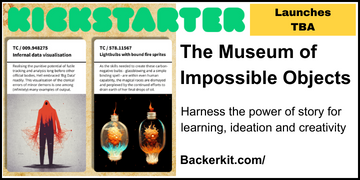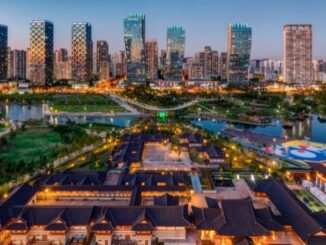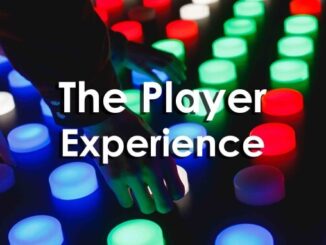
Ludogogy has entered into an agreement with Gamification Journal, based in Seoul, South Korea, for the mutual exchange of articles. This is the seventeenth of those articles we are publishing and it was in exchange for Sajid Chougle’s article on Creativity – Eureka Moment or Piecemeal Awakening.
In the age of buying experience, games becomes daily life
Gamification which has been actively utilized as corporate marketing strategy since the year 2010 was re-focused as fun-based motivation for users after growing online business during the COVID-19 pandemic. Technological development accelerated the ‘age of experience’ which means that individual taste in experiences affects decision-making. Gamification, including the elements of flow, accomplishment, and social interaction has become part of daily life in various online and offline areas through direct and indirect experience. According to Hype Cycle, published by Gartner, gamification entered the 5th stage – ‘stabilization’ in 2022, moving in ten years, from the 2nd stage – ‘before popularization’ in 2012. The application and spread of gamification in various real life areas has evolved and become normalized.
Gamification, a tool for solving a city’s problem through being playable and sustainable
Gamification tends to extend to not only corporate marketing and education, but also visitor attraction and entertainment in the local community, and citizen participation. Providing ‘fun’ with gameful elements from the perspective of ‘motivation’, is increasingly an interesting factor for attraction to the local environment.

Locally-used gamification is broadly related to either solving social problems (living lab), or smart cities. The core of local gamification is to provide a platform for civilians to participate in as a fun way (Playable) and to improve the systems operated by the local community or social enterprise (Sustainable). The ‘SmartCity’ platform1 in Amsterdam, Netherlands is operated as an open platform to solve city problems both online and offline. Group, ‘Play the City’2 which seeks policy alternatives to various city problems through City Gaming, is a good example of attracting the participation of public servants, citizens, and professionals, and pursing alternative solutions to local problems.
1) An online communication portal for government, companies, schools, and local people. Local citizens directly share the projects, and the SmartCity experience labs are operated offline.
2) The ‘City Gaming’ of ‘Play the City’ supports various participations in city planning. Digitalized data based on local data and policy documents is provided through the network, and these data can be used for making games. Subjects included in data are housing, space development, climate change, social change, etc. Projects are conducted through policy-making, participation, structuring, and research, etc. The number of participants in the year 2010 was 4,902. People participated in 185 city games in 20 cities from three continents and nine countries in a total of 42 game sessions of ‘Play the City’. (source: https://www.playthecity.eu/)

From citizen education to local tours. Expansion of local gamification
Social trends surrounding city and space started the new urbanism of the 1980’s, reflecting the uncontrolled city expansion. During the 1990s, sustainability became the worldwide agenda, emphasizing the locals and those people’s participation rather than ‘central urban’ versus ‘rural’. In local policy decision-making, a top-down approach changed into a bottom-up one. Citizen participation became a prerequisite for local planning and administration.
Many models of citizen participation in local areas are based on meetings and participatory workshops and problem-solving, not on unilateral delivery by lecture. Also, game-based citizen education is being developed. In various local development businesses, originally dominated by professionals, local people started offering opinions and content. During this kind of process, gamification for driving participation becomes more important. There are some examples. ‘Eunpyeong Korean Village’ located in Eunpyeong-gu, Seoul covers village history and stories, through the use of an app and local tour. ‘Gohan Wildlife Reasoning’ located in Gohan-eup, Jeongseon-gun, Gangwon province, implements gamification designed to utilize the village resources to promote the region and attract visitors.


Gohan-eup, Jeongseon-gun in Gangwon province was the largest coal mining area in Korea and is now closed and unused. To revitalize the village, an escape game using the setting of side streets was developed for attracting the visitors. (Source : http://www.tournews21.com/)
In addition, gamification is used to seek solutions by assessing various local problems, and utilising the participation of citizens and professionals. Living Lab projects to find and solve local issues, or deriving solutions through workshops, are relevant examples. My company, Ggurim, conducts the planning and operation of local revitalization research and citizen participation programs. We have used educational board games to deliver necessary knowledge and information, and have developed a gamified citizen education curriculum.
In the local area, gamification and play attracted much more mutual understanding and participation than stereotypical expert explanations. Companies usually use online gamification, but local communities usually use face-to-face gamified interaction by arranging opinions and experiencing the local environment. Through this, local citizens naturally learn the value of ‘together’ in a gamified way. They can easily participate in and exchange opinions between each other through the medium of the game. I have experienced the core of these.
A game is a problem-solving activity approached with a playful attitude
Jesse Schell
The game, as defined by game designer, Jesse Schell makes the meaning of gamification more clear. Play becomes participation, and the result of its participation can be solutions to local problems. In this kind of virtuous circle, I expect the power of gamification is endless.




For more on the use of games and gamification in city planning, and the built environment, please enjoy these other posts from Ludogogy.
Gamifying Social Action towards Thriving Cities from Sofia Kavlin
Making a Small Vibrant City through Gamification also from GamiJournal
Review of ‘Ideas, Arrangements, Effects’
Co-creative Experiences – Serious Games for Spatial Planning from Micael Sousa
- Making the Value of ‘Together’ Better: Local Gamification - 27th July 2023






Be the first to comment